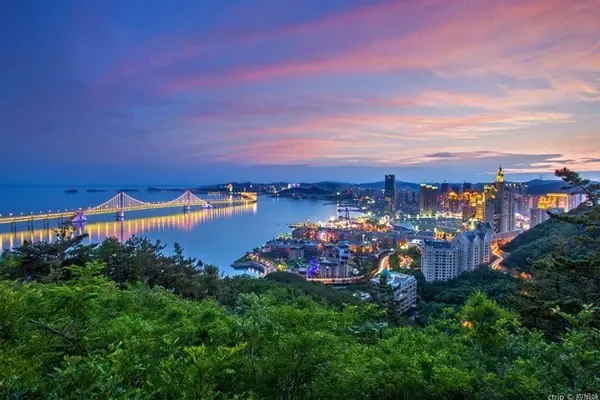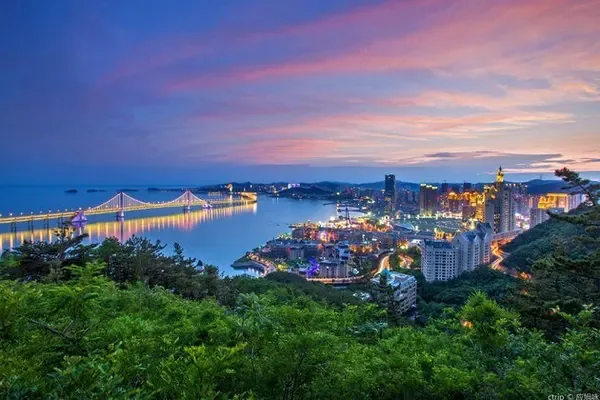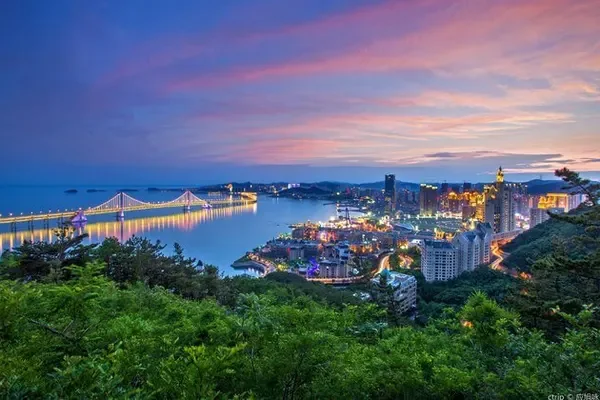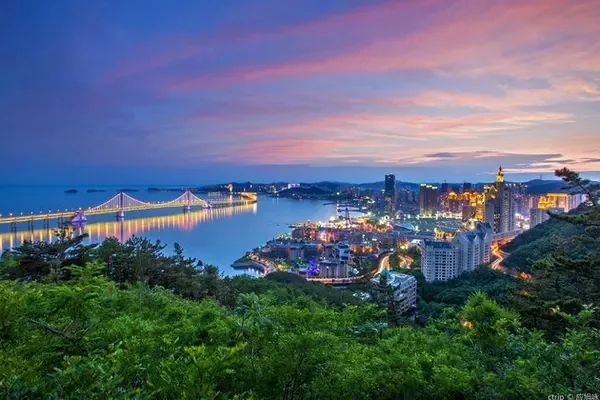Finding a place with few people and good scenery is probably the most desired vacation mode for Chinese people now. Without leaving Beijing, I will take you to see the nearest summer resort.
Shihua Cave is located deep in the West Mountain of Fangshan District, Beijing, only 40 kilometers away from the center of Beijing. Also known as Qianzhen Cave and Shifo Cave (Stone Buddha Cave), it was formed in the orogenic movement 70 million years ago. The whole cave is a very good geography and history textbook, it uses stones to record the passage of time. Although it is very close to Beijing, not many people know Shihua Cave, but it is one of the four largest karst caves in China, together with Reed Flute Cave in Guilin, Yuhua Cave in Fujian, and Yaolin Cave in Hangzhou, because it is the first karst cave discovered in China. CIMC caves with large scale, multiple cave layers, complete sedimentary types, and large amount of secondary chemical deposits can also rank among the top caves in the world in terms of aesthetic value and scientific research value.
Karst caves are underground spaces formed by karst action in soluble rocks. The formation of karst caves is the result of long-term dissolution of groundwater in limestone areas. Therefore, karst caves are inextricably linked with water. It is well known that places with karst caves generally have underground water or underground rivers.
The reason why the Shihua Cave System is one of the four major cave systems is that its dominant karst landscape has a variety of strange shapes, including the Shihua Cave Stone Shield Group deposited by fissure infiltration water, the Yinhu Cave stone hairs deposited by capillary infiltration water, and the Qingfeng Cave stone pillars deposited by dripping water. , Shihuadong stalagmites with clear micro-bedding, Shihuadong sand sculptures deposited by sand dripping water, Shihuadong stone flags deposited by flowing water, Shihuadong moon milk stones deposited by pool water, Jimaodong travertine covering Tang Dynasty inscriptions, and co-deposited The cloud basin in Shihua Cave and the stalagmites in Shihua Cave with obvious overlapping relationship.
The natural landscape in the cave is colorful and of various types. There are tall and white stalagmites, carnations, stalactites, stone mantles, stone waterfalls, side troughs, stone dams, stone terraces, etc. formed by dripping, flowing and stagnant water. Numerous stone flowers, stone branches, curly stones, crystal flowers, stone hairs, stone chrysanthemums, stone pearls, stone grapes, etc. formed by seeping water, splashing water, and capillary water deposition. There are also many naturally formed shapes, such as turtles protecting treasures and three-lamp stalagmites. There are crystal goose pipes, pearl pagodas, lighting walls, etc., and numerous multicolored stone flags and beautiful stone shields are typical of Chinese cave deposits. A large number of moon milk stone lotuses were discovered for the first time in Chinese caves.
There is also a legend in Beijing Shihuadong National Geopark. According to legend, a long time ago, a monk named Yuanguang traveled here. When he was taking a nap in the hot summer, he was awakened by a cool air. Driven by his heart, he chiseled a hole with a hammer. He passed through the thin-walled hole, crawled far, far, and saw a little bit of fluorescent light gathering in front of him. Through the fluorescent light, he saw the This huge cave is decorated with many kinds of crystal clear columnar, flower-shaped, umbrella-shaped, and spherical magical and gorgeous scenery. He was intoxicated, so there was a poem titled "Xianxiang Dongfudi, diving into the real treasure". , and the three characters "Qianzhen Cave" at the entrance of the cave, and the statue of "Ten Kings of Dizang" is engraved on the stone cliff opposite the entrance of the cave. Since then, he has used this strange cave as his home and devoted himself to practicing.
Temple buildings near the entrance of Shihua Cave (unopened)
Entering from the entrance of Shihua Cave, you can see the first cave where the statue of Ksitigarbha Bodhisattva is seated, which is said to have been carved by a stonemason ordered by Monk Yuanguang. Therefore, this cave is also called "Ten Buddha Cave" (Stone Buddha Cave). Today, although it has been 700 years, it was created next to the "Stone Flower Cave" inscribed by the contemporary celebrity Mr. Zhao Puchu, and the three vigorous regular script characters of "Qianzhen Cave" are still shining in the sun.
The investigation found a total of seven floors, and the first to fourth floors are now open to the public. The tour route is more than 2,500 meters, divided into 16 halls, a total of 18 scenic spots, and more than 120 landscapes.
The natural landscape in the cave is colorful, of various types, and various water forms form various landscapes and shapes. And many naturally formed shapes are also imagined by interested people as various similarities, such as turtle protectors, three-lamp stalagmites, etc. Walking through the caves, you can also find many different things. The shapes in everyone's eyes All may be different.
Things like stone caves are three-point images and seven-point images. There are crystal goose pipes, pearl pagodas, lighting walls, etc., many colorful stone flags and beautiful stone shields are typical of Chinese cave deposits, and there are also a large number of moon milk stone lotuses discovered in caves in my country for the first time. .
Yao Chi Shi Lian
The stone lotus in Yaochi is the largest spectacle in the cave and the most in the country. The blooming lotus in the pool looks like mushrooms and cauliflower. Geologically, it is called "moon milk stone". The appearance is hard, and the inside is a soft powdery substance. Moonmilk stone is a milky, milky, plastic, cheese-like calcium carbonate formed by pool water deposition. Its deposition structure has honeycomb, filament, filament and honeycomb combination. . Experts believe that it may be related to the action of bacteria. This landscape was first discovered in Shihua Cave in Beijing in 1982.
Silver flag rolling
This landscape belongs to Shiqi, which is located at the highest point of the west branch of Shihua Cave, with a height of 2.18 meters and a width of 1.1 meters. During the formation process, there are few impurities and slow crystallization, so the whole body is transparent, pure as fat, and white as jade. Hence the name "Silver Flag". This is the second largest wonder in the cave and the second highest in the country.
Tengliu Waterfall
Tengliu Waterfall is a stone waterfall formed by the deposition of calcium carbonate on the slope by flowing water. The upper flowing water full of calcium carbonate flows down along the cracks in the cave wall. The landscape is 10 meters high and 20 meters wide, and the exposed landscape that tourists can see is only one-third of the waterfall. This is the largest stone waterfall in the cave. It is named "Tengliu Waterfall" because of its shape. The third largest wonder in China.
torch hanging upside down
The torch hangs upside down as the largest stalactite in the cave. This landscape is formed by the deposition of dripping and flowing water. It grows downward from the top of the cave. The huge stalactite is 18 meters high and 3 meters wide. It looks like an upside-down torch burning blazingly. Named "torch hanging upside down". It is the fourth wonder in the cave.
At the same time, the upside-down torch landscape was also one of the entrances for cave exploration during the Cultural Revolution. Under the torch, the words "Kaigang Hall" and "Long Live Chairman Mao" were written on the big stone.
Dragon Palace Curtain
The Dragon Palace curtain is the largest stone curtain group in the cave, also known as the stone curtain, which is formed by the deposition of calcium carbonate along the cave wall by dripping, linear flowing water and sheet flowing water. The stone curtain is 10 meters high, 8 meters wide, and has 540 pieces. Under the illumination of the light, it looks like a large stage curtain that has not been opened, so it is called "Dragon Palace Curtain". The third highest in the country.
Optimizing the sky mandarin duck column
The landscape is located at a vertical height of 78 meters from the ground, which is the deepest point on the second floor. The landscape is composed of two majestic stone pillars of uniform thickness, which are formed by connecting stalagmites and stalactites and growing inwardly. The height is 12.6 meters, which are the two tallest stone pillars in the cave. Because of their similar shapes, the same cause of formation, and similar ages, they are collectively called "Qingtian Mandarin Duck Columns". This landscape is the sixth wonder in the cave.
Dragon Girl Embroidery Table
The landscape is a stone shield, with a height of 1.2 meters and a diameter of 2.6 meters, which is the largest stone shield in the cave. There are as many as 220 large and small stone shields in Shihua Cave, known as the "Kingdom" of shields. The stone shield is formed by the deposition of calcium carbonate when the confined water in the fractured layer flows out from the fracture. Starting from the opening of the crack and growing outwards layer by layer in a ring shape, two upper and lower plate shields are formed; if the water flow is large, the water flowing out from the crack opening around the edge of the stone shield can form stalactites and stone mantles downwards. Therefore, the landscape is named "Dragon Girl Embroidery Platform". This landscape is the seventh wonder in the cave and the fourth highest in the country.
fire tree silver flower
Fire tree silver flower is the eighth wonder in Shihua Cave. The stone flower is formed by the synergistic deposition of cave wall seepage water and capillary water. This area of stone flowers is distributed within a range of 30 meters in length and more than 3 meters in width. Almost all of them are stone flowers, stone hairs, stone branches, stone chrysanthemums and stone grapes hanging on the cave wall, forming a variety of stone flower landscapes in various shapes. Because of the many and beautiful stone flowers in the cave, the Stone Flower Cave got its name.

cloud basin
The cloud basin, with a diameter of 9 meters, is formed by the combined action of dripping water, splashing water, and stagnant water to deposit gadolinium carbonate in the sunken pond in the cave. The sediment precipitated from the pond is called "pond sediment". Near the water level of the pond, the calcium carbonate frame precipitated by the supersaturated water is called "curbstone", which can indicate the stagnation height of the water level in the pond in the past. Floating on the water surface are several millimeters of thin ice flake-like products, which are called "water calcium film or cave rafts". Below the water level, it crystallizes into various forms of calcite crystal clusters and underwater stone grapes, such as hole beads, hole cakes, and crystal flowers in the pool. The landscape is the ninth wonder in the cave and the fifth most in the country.
Cloud Basin Pineapple Lantern
This landscape belongs to the stalagmite, which is formed by the deposition of dripping water. On the top of the stalagmite, there is a shape formed by the dripping water depositing calcium carbonate at the bottom of the cave and growing upward. The dripping points of these three different stalagmites form a peculiar landscape because of the different impurities contained in the water: those with few impurities in the water crystallize slowly, and the stalagmites are transparent; those with many impurities in the water crystallize quickly, and the stalagmites are opaque. It is true that one stone produces three things, and all things are different.

The constant temperature in Shihua Cave is 13 degrees Celsius all year round, and the seasons are like spring. Maybe it’s a good place for you to escape the heat~



